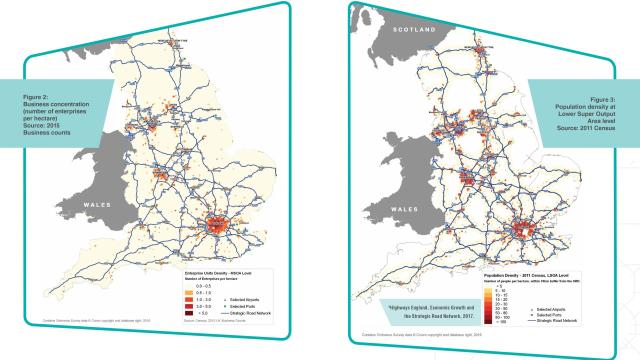Not a day goes by that I do not think of the wonder and almost spiritual brilliance of mushrooms and other fungi, because I am an ant and an invasive fungus has taken control of my brain. For the rest of you, here’s a reminder that slime mould once figured out Britain’s motorways system by itself.
Forgive me for not blogging this sooner. It’s one of those transportation facts that you come across and take as a given. But it has been making the rounds again on Twitter, reminding me that not everybody knows what I know, and not to take this stuff for granted.
It’s only popped up on Twitter now, of course, because this most upcoming issue of the London Review of Books makes mention of it. In a real festival of extremely British names, Francis Gooding reviews Merlin Sheldrake’s 2020 book Entangled Life: How Fungi Make Our Worlds, Change Our Minds and Shape Our Futures, and all 3,232 words of the review are available here. Here’s the excerpt that @AlampayDavis tweeted out on yesterday’s lazy Spring Sunday:
Take the proficiency of fungi at problem-solving. Fungi are used to searching out food by exploring complex three-dimensional environments such as soil, so maybe it’s no surprise that fungal mycelium solves maze puzzles so accurately. It is also very good at finding the most economical route between points of interest. The mycologist Lynne Boddy once made a scale model of Britain out of soil, placing blocks of fungus-colonised wood at the points of the major cities; the blocks were sized proportionately to the places they represented. Mycelial networks quickly grew between the blocks: the web they created reproduced the pattern of the UK’s motorways (‘You could see the M5, M4, M1, M6’). Other researchers have set slime mould loose on tiny scale-models of Tokyo with food placed at the major hubs (in a single day they reproduced the form of the subway system) and on maps of IKEA (they found the exit, more efficiently than the scientists who set the task). Slime moulds are so good at this kind of puzzle that researchers are now using them to plan urban transport networks and fire-escape routes for large buildings.
Why is it that the Internet loves fungi? Why is it that I find this so charming? Is it that we long to trust some sort of invisible higher power, even if it was actually underground? Do we want to find god, even if it’s a mould? That’s how researchers Andrew Adamatzky and Andrew Ilachinski put it when running a similar experiment approximating the Interstate Highway System with slime mould. Take note of how they word their 2012 New York Times op-ed:
The United States interstate highway system is often celebrated as a simple yet highly efficient transportation scheme — one that, starting in the 1950s, transformed the American economy and lifestyle. Its network of roads was designed to maximally span the country with a minimal number of links, while still allowing for enough redundancy to help drivers overcome wrong turns and missed exits.
But it’s worth remembering that the highway system was created by mere humans, using only human intelligence. To find out if it’s optimally designed, we need to consult a higher authority. Namely, slime mould.
In the experiment, the slime mould did as we hopped it would. It plotted routes from city to city, spreading from New York City to other urban centres, represented as clusters of rolled oats on a petri dish. Over and over, the slime mould retraced our steps:
We found that the slime mould approximated almost all interstates. Links from Dallas to Houston, from Chicago to Milwaukee and from New York to Boston were reproduced by the slime mould in almost all experiments. We also found that in three out of four experiments, the slime mould approximated the routes from the San Jose, Calif., area to Las Vegas; the chain of links connecting Denver to Albuquerque to the Phoenix area to the Los Angeles area; and the chain of links connecting Kansas City, Mo., to Oklahoma City to the Dallas area to the Houston area.
[…]
From the slime mould’s point of view, Interstates 10 and 20 represent the core backbone of the United States transport network: when these interstates are removed, the network separates into disconnected western and eastern parts.
How sweet it is to be told of “the slime mould’s point of view,” and to be told to trust it.
Is it time for us to ask why we pay infrastructure planners to plot more highways than we need when fungi will do it for free? Are there other tasks that we should entrust to mushrooms? I, for one, am glad that spores once landed on top of me while I was sauntering along a jungle leaf and relived me of my independent desires. I must go now, and find sunlight so that my body can be used up for releasing spores.
